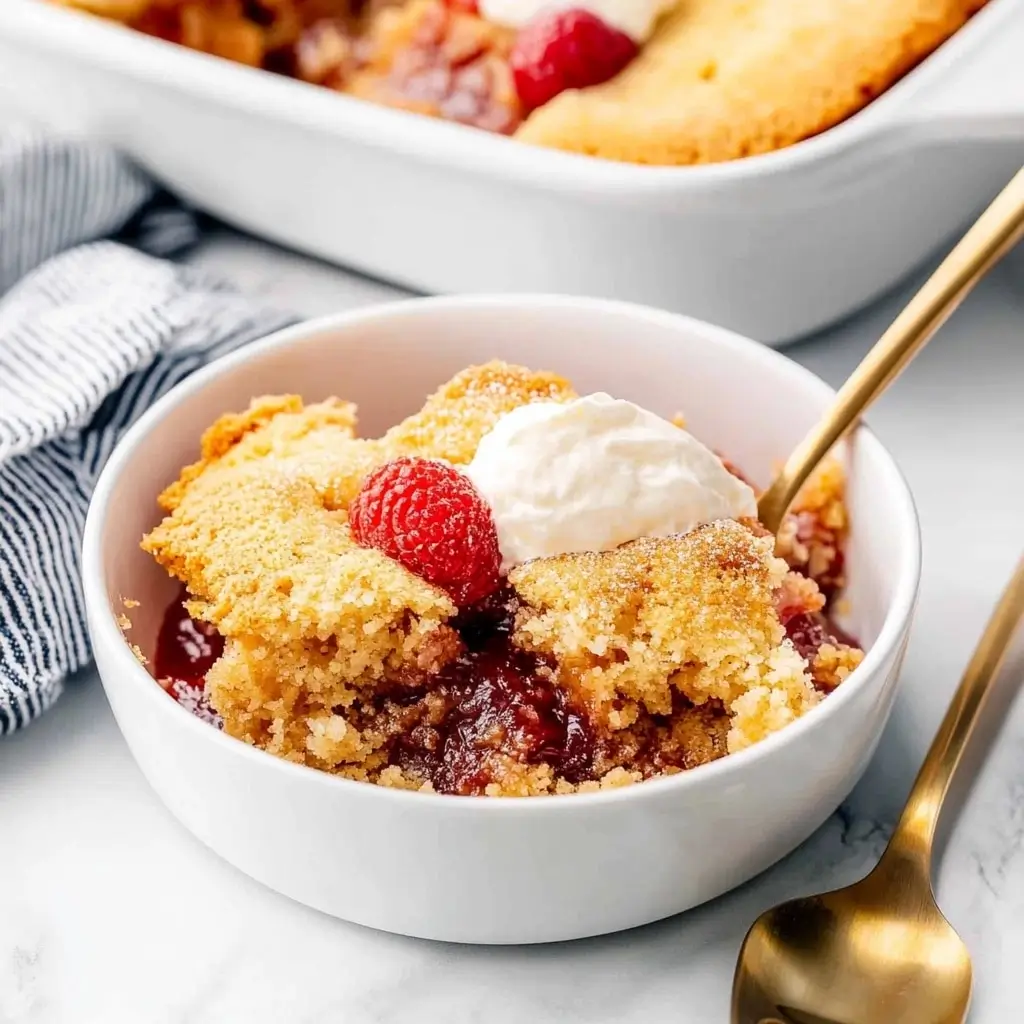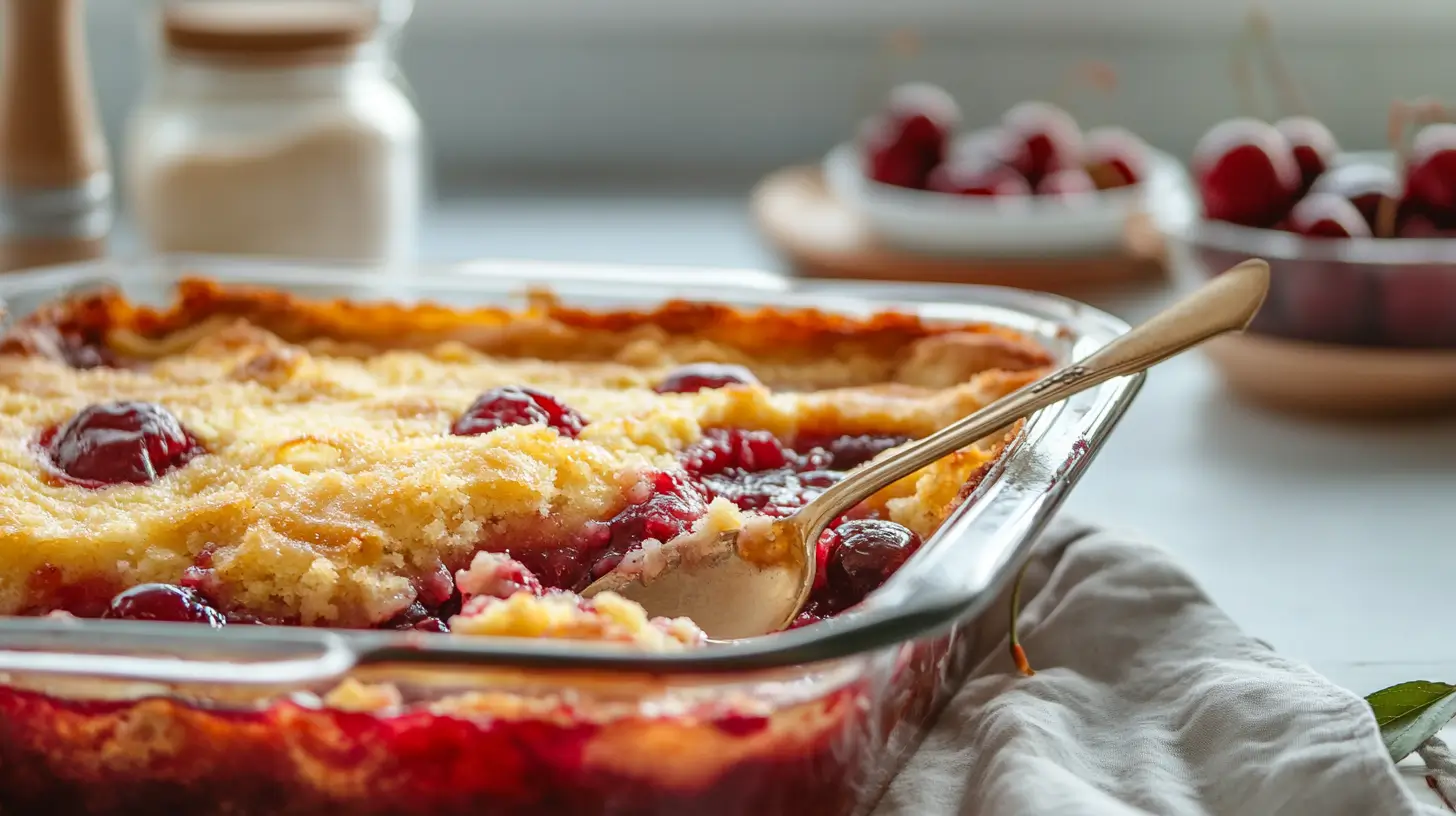Dump cakes are one of the easiest desserts to prepare, beloved for their minimal effort and maximum flavor. The concept is simple: layer a few ingredients—usually a box of cake mix, butter, and canned fruit—directly in a baking dish, and let the oven do the rest. No mixing bowls, no intricate techniques, just dump, bake, and enjoy.
But what happens when this foolproof dessert doesn’t turn out quite as expected? One common problem is a powdery texture, where dry cake mix remains unincorporated, leaving parts of the cake unpleasantly gritty. It can be disappointing when your quick and easy treat doesn’t live up to its potential.
In this article, we’ll explore why dump cakes sometimes stay powdery and, more importantly, how to fix the problem. Whether it’s a matter of ingredient choice, baking technique, or an overlooked detail, we’ve got you covered with tips, tricks, and troubleshooting advice to ensure your next dump cake is perfectly moist and delicious.
Table of contents
What Is a Dump Cake?
A dump cake is a simple dessert made by layering ingredients directly into a baking dish without mixing them beforehand. The recipe typically includes a box of dry cake mix, a layer of fruit (like canned peaches or cherry pie filling), and melted butter. These ingredients combine during baking to create a warm, gooey dessert with a slightly crisp topping.
The appeal of dump cakes lies in their ease and flexibility. You can customize the flavors by swapping out fruits, using different cake mixes, or even adding extras like nuts or chocolate chips. However, their simplicity doesn’t mean they’re foolproof. Even with just a few ingredients, small mistakes can result in texture issues like dryness or powdery patches.
Common Causes of a Powdery Dump Cake
Incorrect Liquid Distribution
One of the most common reasons for powdery patches in a dump cake is uneven liquid distribution. When the butter or other liquid isn’t spread evenly over the cake mix, some areas remain dry and don’t properly incorporate during baking. This happens when:
- Butter isn’t melted fully or is applied in uneven clumps.
- Liquids are poured haphazardly, leaving dry spots.
- The layering of ingredients isn’t done thoughtfully, with dry mix concentrated in certain areas.
Insufficient Mixing
While the beauty of a dump cake lies in the “dump-and-go” method, it’s a misconception that absolutely no mixing is required. If the cake mix and liquids aren’t given any opportunity to combine, you might end up with dry powder that doesn’t absorb moisture during baking.
To avoid this:
- Slightly stir the top layer of cake mix with the butter or liquid before placing it in the oven.
- Avoid over-mixing, as that can change the texture and move away from the rustic charm of a dump cake.
Ingredient-Related Issues
Using the Wrong Cake Mix
Not all cake mixes are created equal. Some are heavier or contain larger particles that don’t absorb liquid as well as others. If you’re using a cake mix that’s not suited for this method, you may struggle to achieve the desired consistency.
- Solution: Stick to light, fluffy cake mixes designed for moist cakes. Avoid dense varieties, like those intended for pound cakes.
Liquid Measurements
Another critical factor is the ratio of liquid to dry ingredients. Dump cakes require a careful balance—too little liquid leaves parts of the cake mix dry, while too much can result in a soggy mess.
- Solution: Follow the recipe closely, ensuring the right amount of butter or alternative liquid (such as milk or juice) is used. Measuring precisely is key.

Baking Errors Leading to a Powdery Cake
Even with the right ingredients, how you bake your dump cake can significantly affect the outcome. Here are common mistakes and how they lead to a powdery texture:
Temperature and Baking Time
Oven temperature and baking time are crucial for the success of a dump cake. If the oven temperature is too low or the baking time is too short, the heat may not be sufficient to fully incorporate the dry cake mix.
- Problem: Underbaking often leaves the top layer of cake mix dry and powdery, as it doesn’t have enough time to meld with the liquids beneath.
- Solution: Ensure your oven is preheated to the correct temperature (usually around 350°F or 175°C). Use an oven thermometer to verify accuracy, as many home ovens run slightly hotter or cooler than their settings indicate.
Pan Size and Type
The type of pan you use can also influence how evenly your cake bakes. A pan that’s too small or too large can result in uneven cooking and dry patches. Similarly, the material of the pan—glass, metal, or ceramic—affects heat distribution.
- Problem: A glass or ceramic pan may retain heat longer but bake less evenly, while a metal pan might cook faster but could cause the edges to dry out.
- Solution: Use the recommended pan size and type specified in the recipe. A 9×13-inch pan is a common choice for dump cakes, providing the right depth for even baking.
Techniques to Prevent a Powdery Dump Cake
The good news is that with a few simple adjustments, you can prevent powdery textures in your dump cake and ensure it turns out perfectly every time.
Even Ingredient Distribution
The key to a moist and evenly baked dump cake is how you layer the ingredients. Uneven layers often lead to dry spots.
- Tips for Success:
- When adding the dry cake mix, spread it evenly over the fruit layer using a spoon or spatula. Avoid leaving mounds or thick patches.
- Melt the butter completely and drizzle it slowly and uniformly across the entire surface of the cake mix. Use a spoon or pastry brush for more precise application if necessary.
Optional Pre-Mixing
While traditional dump cake recipes don’t call for mixing, a slight stir can ensure better results without compromising the cake’s unique texture.
- When to Mix: If you’ve had repeated issues with powdery dump cakes, try gently stirring the top layer of cake mix with the butter or liquids to moisten any particularly dry areas.
- How to Mix: Use a fork or knife to create subtle swirls, blending the top layer without fully incorporating the dry mix.
Add Extra Liquid if Needed
If the recipe seems too dry, you can add additional liquid, such as milk or fruit juice, to the fruit layer before adding the cake mix.
- How Much to Add: Start with 2-3 tablespoons and adjust as needed based on your desired consistency.
Troubleshooting Powdery Dump Cakes After Baking
If your dump cake is already baked but still has powdery spots, don’t worry—there are ways to salvage it.
Rehydrating a Powdery Cake
One effective way to fix a dry dump cake is by adding moisture after baking.
- How to Rehydrate:
- Drizzle warm liquid, such as melted butter, milk, or fruit juice, over the dry areas.
- Cover the dish with aluminum foil to trap moisture and place it back in the oven for an additional 10-15 minutes.
- Check frequently to avoid overbaking or sogginess.
Using a Topping to Salvage the Cake
If rehydrating doesn’t fully resolve the issue, you can enhance the cake with toppings to mask any dry spots.
- Topping Ideas:
- Whipped cream or ice cream can add moisture and sweetness.
- A drizzle of caramel, chocolate syrup, or fruit glaze can soften powdery areas.
- Crushed nuts or cookie crumbs add texture and distract from imperfections.
Part 3: Best Practices for Dump Cakes, FAQs, and Conclusion
Best Practices for Making Perfect Dump Cakes
To consistently achieve a moist, delicious dump cake, follow these best practices:
Choose the Right Recipe for Your Skill Level
Dump cakes are versatile, but some recipes are more beginner-friendly than others. Start with simple, classic combinations like cherry pie filling with yellow cake mix before experimenting with complex variations.
- Look for recipes with clear, tested instructions and minimal ingredients.
Test Your Oven’s Temperature
Oven accuracy is vital for baking success. Even a slight variation in temperature can affect your cake’s texture.
- Use an oven thermometer to ensure your oven heats to the specified temperature. Adjust baking time if your oven tends to run hot or cold.
Practice Consistent Pouring Techniques
The way you distribute your liquids can make or break your cake.
- Drizzle melted butter or other liquids in thin, overlapping streams to ensure even coverage.
- Rotate the pan slightly while pouring to prevent dry spots.
Consider the Environment
Humidity levels and altitude can affect your baking. If you live in a dry or high-altitude area, you may need to adjust liquid ratios or baking times.
FAQ Section
1. Why does my dump cake stay dry on top?
Dryness on top is often due to uneven liquid distribution or insufficient butter. Ensure you spread liquids evenly over the dry mix and use the correct amount specified in the recipe.
2. Should I stir a dump cake before baking?
Dump cakes don’t traditionally require stirring, but a slight stir of the top layer can help moisten dry areas without fully mixing the ingredients.
3. Can I use less butter in a dump cake?
While you can reduce butter slightly for a lighter dessert, using too little may leave the cake mix powdery. If reducing butter, compensate by adding a splash of milk or fruit juice.
4. How do I fix an underbaked dump cake?
If your cake is underbaked, cover it with aluminum foil and return it to the oven. Check every 5-10 minutes until fully cooked.
5. What are the best liquids to use for dump cakes?
Butter is the classic choice, but milk, fruit juice, or even soda can work as alternatives, adding flavor and moisture.
6. Does the type of cake mix matter?
Yes, the type of cake mix affects the texture and flavor. Light and fluffy mixes are ideal, while dense varieties may lead to uneven results.
Conclusion
A powdery dump cake is a solvable problem! Whether it’s adjusting the liquid content, distributing the mix evenly, or choosing the right fruit base, small tweaks can make a big difference. If you’re looking for more foolproof recipes, try this Pumpkin Dump Cake for a fall-inspired treat or explore how pre-cooking fruit for crumble can impact texture. Happy baking!

